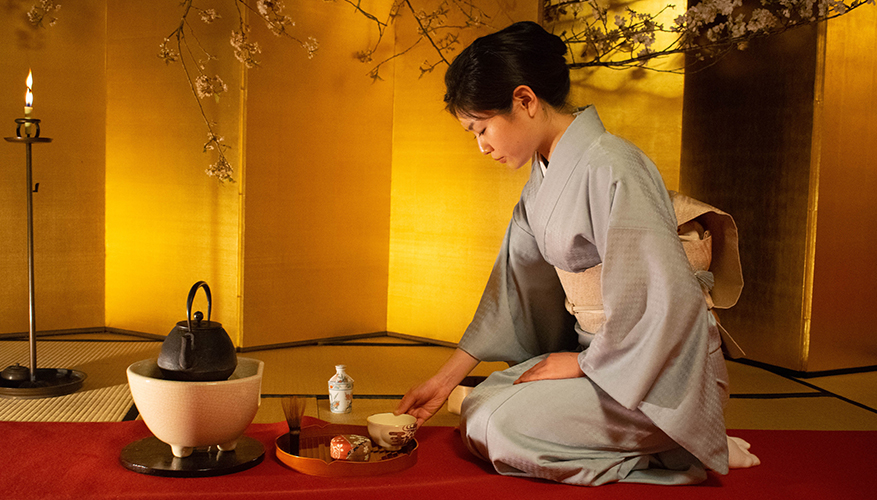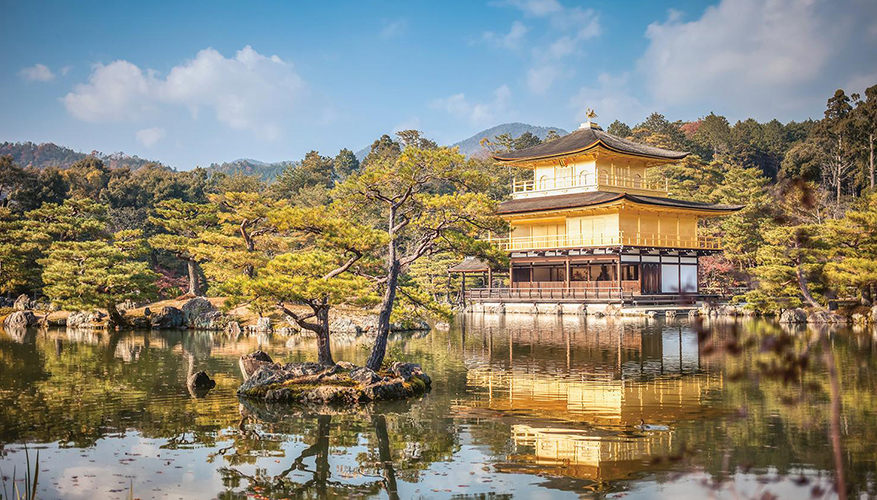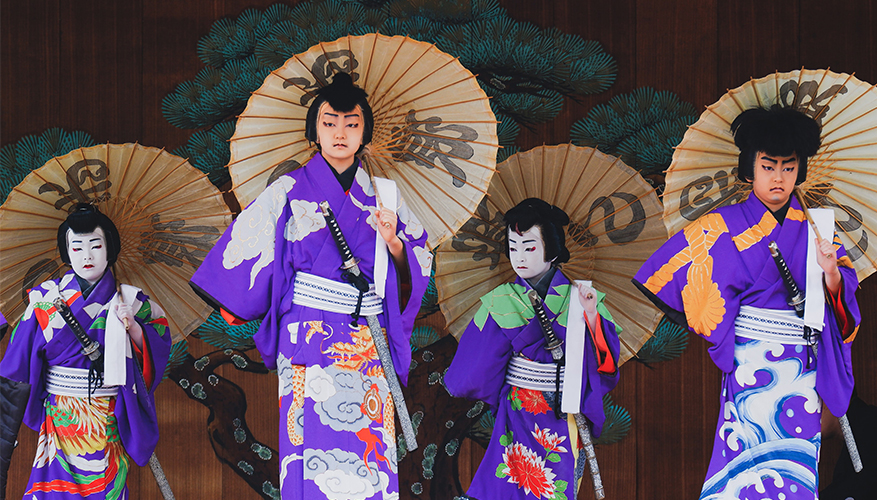
Words courtesy of Bunnik Tours.
Japan is a culturally diverse country with many ancient and beautiful art forms, both protected and promoted as national treasures. Let us give you a crash course on some of their many art terms.
Cha-no-yu, The Art of The Japanese Tea Ceremony

Photo by Romeo A. on Unsplash
It can take years to master this art form. Ceremony styles are distinct from one another and there are many different configurations of tatami (straw floor mats), utensils and temae (the preparation) which all have different meanings. The hanging scrolls are chosen with attention to the season and the chabana (a floral arrangement that displays the wild, unruliness of nature) is purposefully selected. The kimono worn by the host is used to further display respect and good etiquette. All of these details combine to create an intentional atmosphere distinct from the fast pace of everyday life.
Wabi sabi, The Acceptance and Contemplation of Imperfection and Impermanence

Photo by Mike Stezycki on Unsplash
Influenced by Zen and Mahayana philosophy, the wabi sabi aesthetic can be found in Japan’s many gardens (a good example of this is at Kanazawa’s Kenroku-en Gardens) and within the omotenashi hospitality style. Japanese pottery also often exemplifies the wabi sabi aesthetic where imperfections in the surface are fundamental to the object’s beauty.
Haiku, A Short Japanese Poem Evoking A Fleeting Moment In Nature
These poems are short at just three lines and contain a strict number of 17 syllables. For example;
Light of the moon
Moves west, flowers’ shadows
Creep eastward.
(Yosa Buson, late 1700s)
Ikebana, The Art of Japanese Flower Arrangement
Kyoto is the birthplace of this aesthetic pursuit which has a spiritual significance influenced by Buddhism. Silence is required when practicing ikebana in order to connect with and appreciate nature. This practice places emphasis on shape, line and form rather than the colour of the composition. The structure of the composition is based on a scalene triangle, utilising the principle of ten-chi-jin where man reconciles heaven and earth. This is represented in the longest stem (heaven), the shortest stem (earth) and the reconciling stem (man).
Kabuki, A Highly Stylised Traditional Japanese Play

Photo by Susann Schuster on Unsplash.
Kabuki is a style of play performed exclusively by males that dates back to the 1700s. Major role types include aragoto (rough style), wagoto (soft style) and onnagata (where male actors specialize in women’s roles). The plays themselves are typically about historical events and moral conflicts, and are performed on revolving stages with trap doors. The actors will sing and dance and speak in monotone voice, all accompanied by traditional instruments.
Geisha, A Female Artist Trained In Classical Music And Dance
The performance art of the geisha has been misrepresented in western culture since the 20th century. In its most traditional form, geisha art constitutes the performance of a stylised, more subtle form of kabuki theatre, similar to noh theatre. Each dance uses small, subdued gestures to symbolise big emotional story arcs and is accompanied by traditional music.
Eager to experience these beautiful Japanese art-forms first hand?
Bunnik Tours’ low-impact, highly engaging small group tours can take you there. Get in touch with your local
Travellers Choice agent to book.